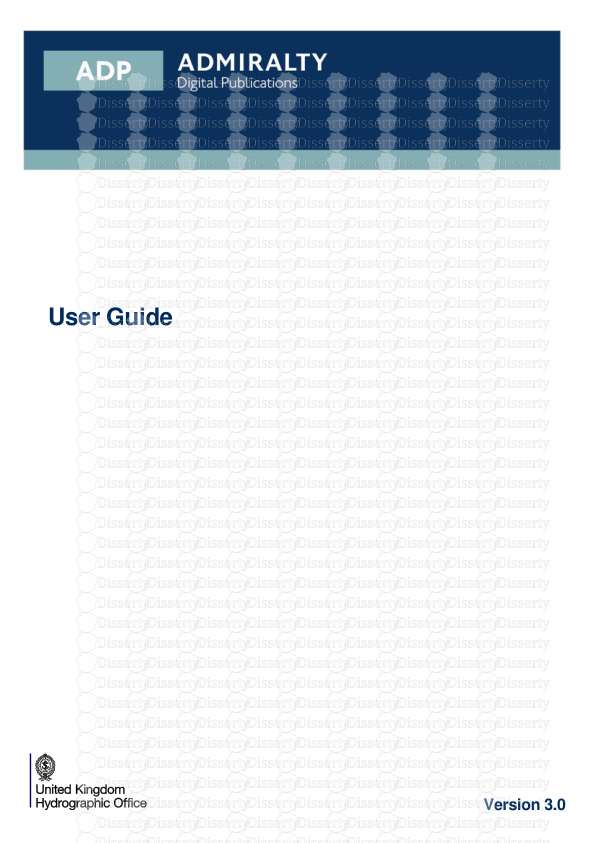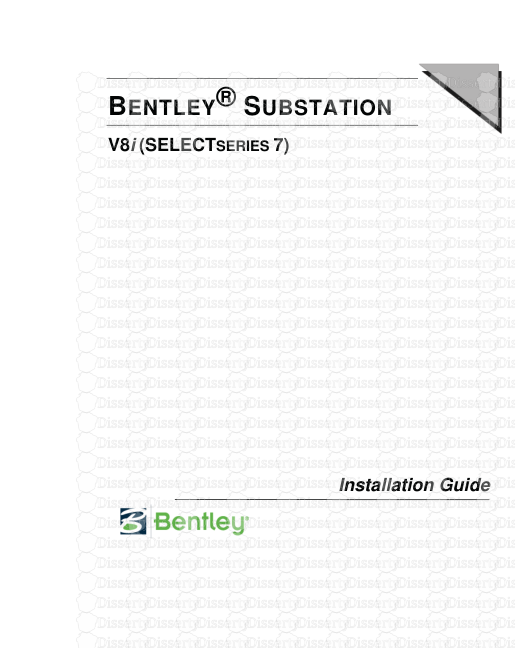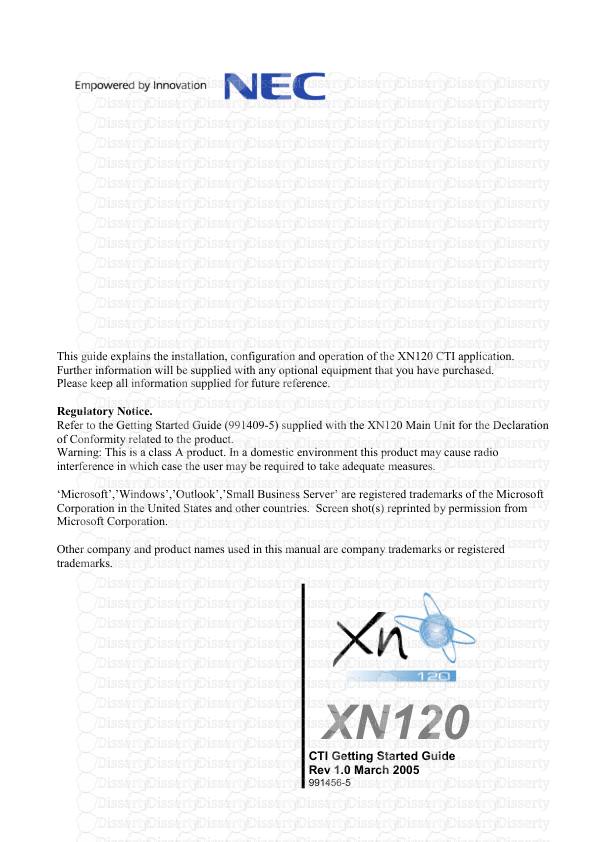ClearSCADA 2017 Software for Telemetry & Remote SCADA Solutions Installation Gu
ClearSCADA 2017 Software for Telemetry & Remote SCADA Solutions Installation Guide Disclaimer The information provided in this documentation contains general descriptions and / or technical characteristics of the performance of the products contained herein. This documentation is not intended as a substitute for and is not to be used for determining suitability or reliability of these products for specific user applications. It is the duty of any such user or integrator to perform the appropriate and complete risk analysis, evaluation and testing of the products with respect to the relevant specific application or use thereof. Neither Schneider Electric nor any of its affiliates or subsidiaries shall be responsible or liable for misuse of the information contained herein. If you have any suggestions for improvements or amendments or have found errors in this publication, please notify us. No part of this document may be reproduced in any form or by any means, electronic or mechanical, including photocopying, without express written permission of Schneider Electric. All pertinent state, regional, and local safety regulations must be observed when installing and using this product. For reasons of safety and to help ensure compliance with documented system data, only the manufacturer should perform repairs to components. When devices are used for applications with technical safety requirements, the relevant instructions must be followed. Failure to use Schneider Electric software or approved software with our hardware products may result in injury, harm, or improper operating results. Failure to observe this information can result in injury or equipment damage. © Schneider Electric 2017. Contents Welcome to the ClearSCADA Installation Guide 1 ClearSCADA System Requirements 2 ClearSCADA Server Requirements 3 Servers and Desktop Computers 4 Disk Drives and RAID Arrays 5 Virtualization 8 Operational Limitations - Server 10 Recommended Server Configurations 12 Server License Settings 15 System Performance Guidelines 16 Client PC Requirements 17 Client PC Specifications 18 Operational Limitations - Client 19 Operating Systems 20 32-Bit 21 64-Bit 22 Screen Resolution and Color Depth 23 Prerequisite Components 24 File Locations (Default) 27 Windows 64-Bit File Locations 28 Windows 32-Bit File Locations 30 Web Browser Support 32 Internet Explorer 9 and Internet Explorer 10 XSS Filter Issue - ‘Hanging’ 33 Installing ClearSCADA 35 Run the ClearSCADA Installer 36 Installation of Prerequisites 38 Welcome to the Schneider Electric ClearSCADA Setup Wizard 40 End-User License Agreement 41 Customer Information 42 Choose Setup Type 43 Full Install 45 Typical Install 47 Custom Setup 49 Wonderware Alarm Provider Component 52 Create a Super User Account 53 Ready to Install 55 WebX Setup 57 ViewX Client 63 Create a New ViewX Client - System Connection 66 Run ViewX 67 System Security 69 Log On to ViewX 70 ClearSCADA 2017 Page i Log Off from ViewX 76 Change your Password via ViewX 78 The ViewX Window 82 WebX Client 83 Differences Between the WebX Client and ViewX 85 Run a WebX Client 88 System Security 90 Log On to a WebX Client 91 Log Off from a WebX Client 94 Change your Password via a WebX Client 95 Determine which User is Logged on to WebX 97 Understand the WebX Interface 98 Example Projects 100 Installing the Examples Database 101 Importing the Example Projects File 105 Enable Example User Accounts 107 Making Changes to your ClearSCADA Installation 109 Upgrading ClearSCADA 111 Preparing to Upgrade ClearSCADA 113 Upgrade a ClearSCADA Server in a Lone Server Architecture 116 Upgrade ClearSCADA Servers in a Multi-Server Architecture 119 Upgrade Multi-Server ClearSCADA with No Clients 120 Upgrade Multi-Server ClearSCADA with Clients 123 Upgrade Your ClearSCADA Clients (WebX Excluded) 126 Upgrade Your ClearSCADA WebX Clients 128 Upgrading a License 129 Upgrading a Dongle License 130 Upgrading a Software License 133 Repairing your ClearSCADA Installation 134 Uninstalling ClearSCADA 136 Uninstall ClearSCADA - ‘Quick’ Uninstall 137 Uninstall ClearSCADA - ‘Complete’ Uninstall 140 Uninstall ClearSCADA WebX - 'Quick' Uninstall 144 Page ii ClearSCADA 2017 Welcome to the ClearSCADA Installation Guide Intended Audience This guide is designed for use by system administrators who are responsible for setting up and managing the ClearSCADA system. Document Scope This guide explains how to install ClearSCADA on server and client computers. In this guide you will find information on: l Required server and client specifications (see ClearSCADA System Requirements) l Installing ClearSCADA on a server (see Installing ClearSCADA) l Installing ClearSCADA on a client (see Installing ClearSCADA) l The different types of ClearSCADA install (see Choose Setup Type) l The Example Projects database (see Example Projects). This is a database that we have created as a demonstration model. You can install it as part of your system so that you can see examples of how a database can be organized and its items configured. l Making Changes to your ClearSCADA Installation l Upgrading ClearSCADA l Repairing your ClearSCADA Installation l Uninstalling ClearSCADA. NOTICE System will not function correctly with Citect SCADA When you install ClearSCADA and Citect SCADA on the same server/client, conflicts will occur between the two applications. The applications will cease to function correctly. DO NOT install the these applications on the same server / client systems. ClearSCADA 2017 Page 1 ClearSCADA System Requirements Your ClearSCADA CD contains the components required to install ClearSCADA on a server and a client. But you should only install ClearSCADA on a server or client computer that meets the required specifications. In the following sections, we describe the required specifications for server and client computers: l ClearSCADA Server Requirements l System Performance Guidelines l Client PC Requirements l Operating Systems l Screen Resolution and Color Depth l Prerequisite Components l File Locations (Default) l Web Browser Support. While it may be possible to install and run ClearSCADA on computers that do not meet our recommended specifications, this may result in an unstable ClearSCADA system. ClearSCADA is only designed to run on computers that meet the recommended specifications. Further Information Installing ClearSCADA Upgrading ClearSCADA. Page 2 ClearSCADA 2017 ClearSCADA Server Requirements In the following sections, we describe the recommended specifications for servers that are to run ClearSCADA: l Servers and Desktop Computers l Disk Drives and RAID Arrays l Virtualization l Operational Limitations - Server l Recommended Server Configurations. You should also refer to the following sections, which apply to both ClearSCADA servers and ClearSCADA clients: l Operating Systems l Screen Resolution and Color Depth l Prerequisite Components l File Locations (Default) l Web Browser Support. ClearSCADA 2017 Page 3 Servers and Desktop Computers There are many factors to consider when purchasing computers for use as ClearSCADA servers, including the expected activity of the system, the amount of historic data required, and the number of database items. While the requirements for each system will vary according to the demands placed on the system, we do make the following recommendations: l For small stand-alone client-server systems with up to 10,000 database items and 1 to 2 remote clients, desktop class computers will be sufficient. Systems of this size are regarded as small systems. l For systems with: l 10,000 or more database items l historic data storage requirements and/or: l 3 or more remote clients server class computers and 64-bit operating systems are required. 64-bit operating systems are also required to run the WebX server. If you are using Microsoft Windows Remote Desktop Services or Citrix XenApp, you need to use a server class computer with at least 2GB per client session and an appropriate number of processor cores. When choosing the appropriate type of computers to use, you also need to consider the use of Disk Drives and RAID Arrays. Page 4 ClearSCADA 2017 Disk Drives and RAID Arrays For increased performance, you should use high performance physical disks such as: l RAID arrays, which can provide: l Improved performance (for example, via striping) l Redundancy, to help protect against disk failure (via mirroring or parity). For example: l RAID 1 with mirroring l RAID 10 (also known as RAID 1+0) striped and with mirroring. l SSD—Solid State Disks (SSD) are especially suitable for storing historic data. You should also consider distributing the load across multiple disks, for example, using a 4 disk set: l One disk to store the operating system and installed applications, including the ClearSCADA application and database l One disk to store the historic data files l One disk to store the Event Journal data l One disk to store the log files. Distributing the load across disks allows for faster access times, as each disk is dedicated to a single purpose. Regardless of the number of disks, you should ensure that each disk has sufficient capacity for its requirements and that your system is set up so that none of the disks become full or near full. For example, the disks used for storing historic or event data while it remains online should be sufficiently large enough to hold the amount of data that is expected to accumulate during that time, while still retaining sufficient free disk space. If you need to retain event or historic data long-term, your system should be set up to archive that uploads/s3/ installation-guide 16 .pdf
Documents similaires










-
70
-
0
-
0
Licence et utilisation
Gratuit pour un usage personnel Attribution requise- Détails
- Publié le Mai 04, 2022
- Catégorie Creative Arts / Ar...
- Langue French
- Taille du fichier 7.2032MB


